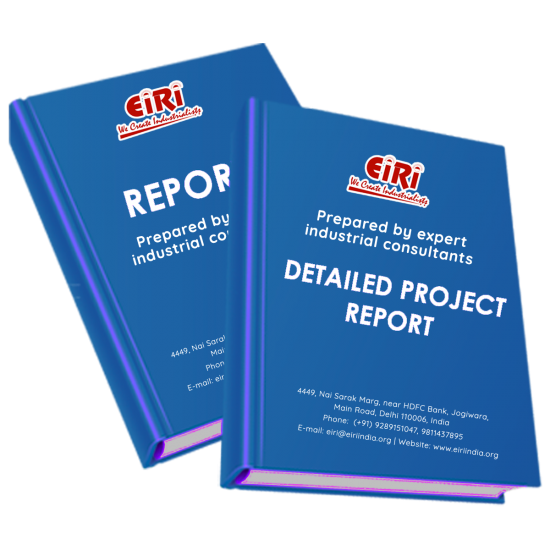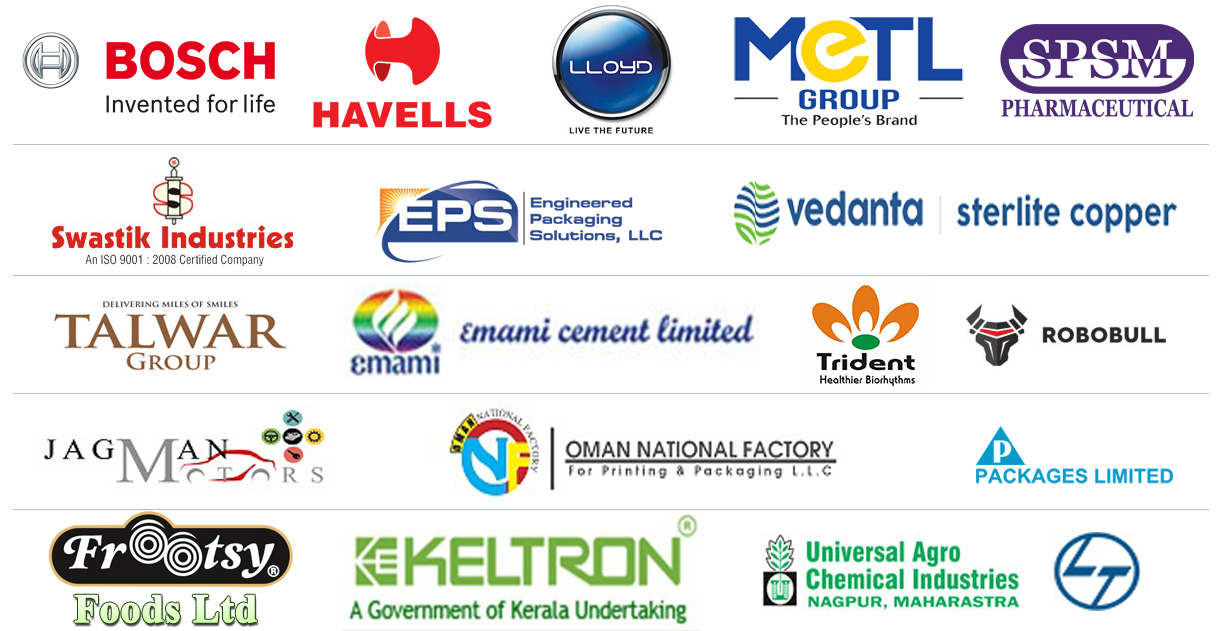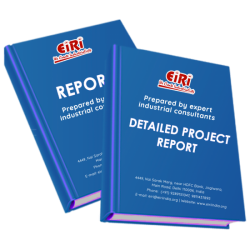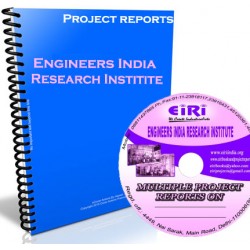Detailed Project Report on ferro alloy (silicon manganese)

- More than 45 years of experience
- Managed by expert industrial consultants
- ISO 9001-2015 Certified
- Registered under MSME, UAM No: DL01E0012000
- 24/5 Research Support
Get your quesries resolved from an industry expert. Ask your queries before report or book purchase. - Custom Research Service
Speak to the our consultant to design an exclusive study to serve your research needs. - Quality Assurance
All reports are prepared by highly qualified consultants & verified by a panel of experts. - Information Security
Your personal & confidential information is safe & secure.
FERRO ALLOY (SILICON MANGANESE)
[CODE NO.3806]
Silico manganese is a metallic ferroalloy composed principally of manganese, silicon, and iron. It is produced in a number of grades and sizes and is consumed in bulk form primarily in the production of steel as a source of both silicon and manganese, although some silicomanganese is used as an alloying agent in the production of iron castings. Manganese, intentionally present in nearly all steels, is used as a steel desulfurizer and deoxidizer. By removing sulfur from steel, manganese prevents the steel from becoming brittle during the hot rolling process. In addition, manganese increases the strength and hardness of steel. Silicon is a deoxidizer, aiding in making steels of uniform chemistry and mechanical properties. As such, it is not retained in the steel, but forms silicon oxide, which separates from the steel as a component of the slag. Silicomanganese generally contains 65 to 68 percent manganese and about 17 percent silicon
Silico-manganese (Si-Mn) is a metallic ferro alloy which is being used to add both silicon (Si) and manganese (Mn) as ladle addition during steelmaking. Because of its lower carbon (C) content, it is a preferred ladle addition material during making of low carbon steels.
Si-Mn is a ferroalloy composed principally of Mn, Si, and Fe (iron), and normally contains much smaller proportions of minor elements, such as C, phosphorus (P), and sulphur (S). The ferroalloy is also sometimes referred to as ferro-silicon-manganese.
Both Mn and Si play an important role in the manufacturing of steel as deoxidizing, desulphurizing, and alloying agents. Si is the primary and more powerful deoxidizer. Mn is a milder deoxidizer than Si but enhances the effectiveness of the latter due to the formation of stable manganese silicates and aluminates. It also serves as desulphurizer. Mn is used as an alloying element in almost all types of steel. Of particular interest is its modifying effect on the iron-carbon (Fe-C) system by increasing the hardenability of the steel.
There are two families of Mn alloys one is called Si-Mn while the other is known as ferro-manganese (Fe-Mn). Si-Mn adds additional silicon in liquid steel which is a stronger deoxidizer and which also helps to improve some mechanical properties of steel. In each family, content of C can be controlled and lowered when producing low C grades. Around 93 % of all the Mn produced is in the form of Mn ferroalloys consists of the Fe-Mn grades and the Si-Mn grades.
The Fe-Mn grades are high carbon (HC), medium carbon (MC), low-carbon (LC) and very low carbon (VLC), whereas the Si-Mn grades include medium carbon (MC) and low carbon (LC). The steel industry is the only consumer of these alloys. However as the average consumption of Mn in one ton of steel is around 7 kg, the requirement of these two ferro alloys amounts to considerable tonnages.
To cover the need for Mn and Si, the steelmaker has the choice of a blend of Si-Mn, HC Fe-Mn and Fe-Si governed of by specifications on C, Si, and Mn. Normally earlier a mixture of HC Fe-Mn and Fe-Si was used, but now a trend towards more use of Si-Mn is seen at the expense of the two others. This is primarily for economic reasons.
Si-Mn is produced in a number of grades and sizes and is consumed in bulk form primarily in the production of steel as a source of both Si and Mn, although some Si-Mn is also used as an alloying agent in the production of iron castings. Mn, which is intentionally present in nearly all steels, is used as a steel desulphurizer and deoxidizer. By removing S from steel, Mn prevents the steel from becoming brittle during the hot rolling process. In addition, Mn increases the strength and hardness of steel. Si is a deoxidizer, aiding in making steels of uniform chemistry and mechanical properties. As such, it is not retained in the steel, but forms SiO2, which separates from the steel as a component of the slag.
Effects of the addition of Si-Mn to steel depend on the amount added and the combined effect with other alloying elements. Both Si and Mn have an important influence on the properties of steel since both of them have a strong affinity for oxygen (O), and act as deoxidizers. Deoxidation with Si-Mn results in cleaner steel, as the liquid manganese silicate formed coagulates and separates easier from the melt, compared to solid SiO2 formed during Fe-Si deoxidation. Use of Si-Mn adds less C to steel compared to combination of standard Fe-Si and HC Fe-Mn. Computational fluid dynamics calculations show that the yield of Si from Si-Mn is higher than that of standard Fe-Si.
Si-Mn normally contains around 65 % to 68 % Mn and around 17 % Si. Various national and international standards for Si-Mn, designates different grades, differentiated by their Si and C contents. All standard grades of Si-Mn are generally acceptable for most uses and they are readily interchangeable.
Si-Mn is added to steel in small quantities, hence it accounts for only a small share of the total cost of end use steel mill products. No single product can substitute for Si-Mn. Steelmakers can and do substitute a combination of high C Fe-Mn and Fe-Si for Si-Mn, although not all steelmakers can make this substitution. In small plants, the facilities for storing and handling material are not sufficient to handle a combination of inputs, so only Si-Mn is used these plants efficiently.
Silicon manganese is a ferro alloy obtained by carbothermic reduction with slag coke from the production of high carbon ferro manganese or manganese ore together with silica as a flux usually in submerged electric arc furnaces, manganese silicon contains between 65%-68% mn, 16%-21%si and approximately 1.5%-2% of carbon. Manganese silicon manufacturing is more energy intensive than the ferro manganese due to the energy requirements for the reduction of the silica to silicon metal. The world’s largest producers are China-which is far above all others, representing more than 50% of the world’s production -India, Ukraine, Norway and Kazakhstan.
There are basically three types of silicon manganese which are a function of silicon and carbon content:
Element Grade A Grade B Grade C
Mn 65.0-68.0 65.0-68.0 65.0-68.0
Si 18.5-21.0 16.0-18.5 12.5-16.0
C, Max. 1.5 2.0 3.0
P, Max 0.20 0.20 0.20
S, Max 0.04 0.04 0.04
Properties
PHYSICAL STATE Solid
COLOUR Silvered gray
ODOUR Odourless
MELTING POINT 1,050°C-1,290°C
BOILING POINT -
SPECIFIC GRAVITY 6.1g/cm³
Both silicon and manganese, besides its deoxidizing and desulphurizing effects, increase the hardenability of the steels.
The product is stable under normal conditions. Its contact with moisture, acids or alkalis causes the formation of extremely flammable (hydrogen) and very toxic gases (arsine and phosphine).
Silicon manganese is not classified as a dangerous product according to the relevant European legislation.
Silicon manganese is not classified as a hazardous good for transportation.
Si-Mn is produced by carbo-thermic reduction of oxidic raw materials in a three-phase, alternating current (AC), submerged arc furnace (SAF) which is also being used for the production of Fe-Mn. Operation of the process for the Si-Mn production is often more difficult than the Fe-Mn production process since higher process temperature is needed. The process of manufacturing Si-Mn is more energy intensive than the process of producing Fe-Mn due to the energy requirements for the reduction of the silica to silicon metal.
Si-Mn is produced by smelting sources of Si, Mn, and Fe, along with reducing agents (usually coke or coal). The raw materials used in Si-Mn production mainly consist of Mn ore, high C Fe-Mn slag, quartzite, coke and coal, and fluxes (dolomite or calcite). The main source of Mn in raw materials for Si-Mn production is Mn-ore and Mn-rich slag from the high C Fe-Mn production. For Si-Mn production in SAF, C (coke and coal) is used as a reducing agent while the heat is supplied by the electric power.
The raw materials are combined in a ‘charge’ and introduced into the furnace where an electrical transformer system delivers high?current, low?voltage electric power to the charge through carbon electrodes. The charge is then heated. Impurities from the ore and other Mn sources are released and form slag. Following smelting, molten Si-Mn and the slag are separated. The molten Si-Mn is cooled and cast. Once the molten Si-Mn is hardened, it is crushed and sized for packing and dispatch.
A process temperature in the range of 1600 deg C to 1650 deg C is needed to obtain Si-Mn alloy with sufficiently high content of Si and for generation of the discard slag with low MnO.
Low carbon Si-Mn with around 30% Si is produced by upgrading standard alloy by addition of Si wastes from the Fe-Si alloy industry.
COST ESTIMATION
Plant Capacity 45 MT/Day
Land & Building (88,202 sq.mt.) Rs. 13.36 Cr
Plant & Machinery Rs. 1.81 Cr
Working Capital for 2 Months Rs. 10.40 Cr
Total Capital Investment Rs. 27.20 Cr
Rate of Return 44%
Break Even Point 57%
- INTRODUCTION
- PROPERTIES
- PROPERTIES
- LUMPS OF SILICO-MANGANESE
- USES AND APPLICATION
- B.I.S. SPECIFICATION
- PROCESS FLOW CHART
- MANUFACTURING PROCESS
- ZONES OF A SILICO-MANGANESE FURNACE
- CRUSHING AND GRINDING OF THE ORE:
- CONCENTRATION OR BENEFICIATION OF THE ORE:
- MAGNETIC SEPARATION OF IMPURITIES:
- THE EQUILIBRIUM IS DETERMINED BY THE FOLLOWING REACTION
- CHARGING:
- SMELTING:
- TAPPING/POURING:
- METAL RECOVERY PLANT:
- CRUSHING AND SCREENING:
- SEPARATION OF METAL FROM SLAG:
- RE-CRUSHING OF MIDDLING:
- PLANT AND MACHINERY FOR MANGANESE METAL
- DETAILS OF 9MVA SUB-MERGED ARC FURNACE
- 1. FURNACE SHELL
- 2. EXHAUST HOOD
- 3. CONNECTING DUCT AND CHIMNEY
- 4. ELECTRODE SYSTEM
- 5. SUSPENSION FRAME
- 6. MANTLE FRAME/ COOLING SHIELD
- 7. PRESSURE RING
- 8. REFRECTORIES
- 9. COPPER WATER
- 10. HYDRAULIC POWER PACK
- 11. SLIPPING MECHANISM
- 12. TAPPING ARRANGEMENTS (OPTIONAL)
- 13. CONTROL PANEL
- 14. SUB STATION
- 15. BATCHING SYSTEM
- 15 (A) WEIGHING & BATCHING OPERATION
- 15 (B) FURNACE FEEDING SYSTEM
- 16. FINISHING PRODUCT HANDLING
- 17. FURNACE TRANSFORMER
- 18. MISC.
- 19. POLLUTION CONTROL EQUIPMENT
- 20. PUMP ROOM
- (1) SUBMERGED ELECTRIC ARC FURNACE
- THE 1ST LAYER
- THE 2ND LAYER
- THE 3RD LAYER
- SUBMERGED ARC FURNACE
- SUBMERGED ARC FURNACE PROFILE
- PRINCIPLE AND CHARACTERISTICS OF SAF
- FEATURES OF SAF
- THE MAJOR NORMAL FEATURES OF AC BASED FURNACES ARE AS FOLLOWS
- (2) DESCRIPTION OF VIBRATING FEEDER
- CHARACTERISTIC OF VIBRATE FEEDING:
- (3) JAW CRUSHER:
- STRUCTURE OF JAW CRUSHER:
- FEATURES OF JAW CRUSHER:
- OPERATING PRINCIPLE OF JAW CRUSHER:
- (3) DESCRIPTION OF VIBRATING SCREEN:
- WORK PRINCIPLE OF VIBRATING SCREENS:
- FEATURES OF VIBRATING SCREEN:
- (4) INTRODUCTION OF BALL MILL:
- WORKING PRINCIPLE OF BALL MILL:
- APPLICATION OF BALL MILL:
- (5) MAGNETIC SEPARATOR
- APPLICATION OF MAGNETIC SEPARATOR:
- ADVANTAGES OF MAGNETIC SEPARATOR:
- (6) FLOATATION MACHINE:
- (7) INTRODUCTION OF SPIRAL CLASSIFIER:
- (8) INTRODUCTION OF BELT CONVEYOR:
- WORKING PRINCIPLE OF BELT CONVEYOR:
- MARKET POSITION
- ROLE OF FERRO ALLOYS
- DEMAND DRIVERS OF FERRO ALLOYS
- TYPES OF FERRO ALLOYS
- FERRO ALLOYS AS DE-OXIDANT FOR STEELMAKING
- GROWTH OF THE FERROALLOY INDUSTRY IN INDIA:
- MAJOR PRODUCERS OF FERRO ALLOYS IN INDIA
- NEW PROJECTS & EXPANSIONS
- RAW MATERIALS FOR BULK FERRO ALLOYS
- USEFULNESS OF CHROMIUM ORE
- CONTRIBUTION OF FERRO ALLOY INDUSTRY TO INDIA'S ECONOMY
- ELECTRICITY GENERATION
- HELPED INDUSTRIALIZATION OF MANY SATES.
- EMPLOYMENT TO THE PEOPLE.
- MAJOR RECOMMENDATIONS OF IFAPA FOR DEVELOPMENT OF THE INDIAN FERRO ALLOY INDUSTRY.
- THE GOVERNMENT SHOULD DEVISE A MECHANISM FOR MAKING FUNDS AVAILABLE
- CONCLUSION
- INDUSTRY, PRODUCTION, DEVELOPMENT AND CONSUMPTION
- TABLE – 1: CAPACITY OF FERRO-ALLOYS INDUSTRY IN INDIA
- BULK FERRO-ALLOYS
- FERRO-MANGANESE/SILICO-MANGANESE
- FERRRO-CHROME/CHARGE-CHROME
- FERRO-SILICON
- NOBLE FERRO-ALLOYS
- OTHERS
- TABLE – 3: STATEWISE, PLANTWISE CAPACITY AND SPECIFICATIONS OF PRINCIPAL FERRO-ALLOYS PRODUCED IN INDIA
- ENVIRONMENTAL ASPECTS AND FUTURE SCOPE
- WORLD REVIEW
- FUTURE OUTLOOK
- PLANT LAYOUT
- MANUFACTURERS/SUPPLIERS OF LOW CARBON SILCO MANGANESE
- SUPPLIERS OF RAW MATERIALS
- SUPPLIERS OF MANGANESE ORE
- SUPPLIERS OF PEARL COKE
- SUPPLIERS OF DOLOMITE
- SUPPLIERS OF QUARTAZ POWDER
- SUPPLIERS OF HDPE BAGS
- SUPPLIERS OF PLANT AND MACHINERY
- SUPPLIERS OF MANGANESE BENEFICIATION PLANT
- SUPPLIERS OF SUBMERGED ARC FURNACE
- SUPPLIERS OF DG SETS
- SUPPLIERS OF EOT CRANES
- SUPPLIERS OF POWER TRANSFORMERS
- SUPPLIERS OF ELECTRICAL PANEL
- SUPPLIERS OF ELECTRIC MOTOR
- SUPPLIERS OF COOLING TOWER
- SUPPLIERS OF EFFULENT TREATMENT PLANT (ETP PLANT)
- SUPPLIERS OF AIR POLLUTION CONTROL EQUIPMENTS
- SUPPLIERS OF AIR CONDITIONING EQUIPMENTS
- SUPPLIERS OF AIR COMPRESSORS
- SUPPLIERS OF PLATFORM WEIGHING MACHINE
- SUPPLIERS OF MATERIAL HANDLING EQUIPMENTS
- SUPPLIERS OF FIRE FIGHTING EQUIPMENTS
- SUPPLIERS OF SHOT BLASTING MACHINE
- SUPPLIERS OF JIGS AND FIXTURE
- SUPPLIERS OF SUBMERSIBLE WATER PUMP
APPENDIX – A:
01. PLANT ECONOMICS
02. LAND & BUILDING
03. PLANT AND MACHINERY
04. OTHER FIXED ASSESTS
05. FIXED CAPITAL
06. RAW MATERIAL
07. SALARY AND WAGES
08. UTILITIES AND OVERHEADS
09. TOTAL WORKING CAPITAL
10. TOTAL CAPITAL INVESTMENT
11. COST OF PRODUCTION
12. TURN OVER/ANNUM
13. BREAK EVEN POINT
14. RESOURCES FOR FINANCE
15. INSTALMENT PAYABLE IN 5 YEARS
16. DEPRECIATION CHART FOR 5 YEARS
17. PROFIT ANALYSIS FOR 5 YEARS
18. PROJECTED BALANCE SHEET FOR (5 YEARS)
How to Make Project Report?
Detailed Project Report (DPR) includes Present Market Position and Expected Future Demand, Technology, Manufacturing Process, Investment Opportunity, Plant Economics and Project Financials. comprehensive analysis from industry covering detailed reporting and evaluates the position of the industry by providing insights to the SWOT analysis of the industry.
Each report include Plant Capacity, requirement of Land & Building, Plant & Machinery, Flow Sheet Diagram, Raw Materials detail with suppliers list, Total Capital Investment along with detailed calculation on Rate of Return, Break-Even Analysis and Profitability Analysis. The report also provides a birds eye view of the global industry with details on projected market size and then progresses to evaluate the industry in detail.
We can prepare detailed project report on any industry as per your requirement.
We can also modify the project capacity and project cost as per your requirement. If you are planning to start a business, contact us today.
Detailed Project Report (DPR) gives you access to decisive data such as:
- Market growth drivers
- Factors limiting market growth
- Current market trends
- Market structure
- Key highlights
Overview of key market forces propelling and restraining market growth:
- Up-to-date analyses of market trends and technological improvements
- Pin-point analyses of market competition dynamics to offer you a competitive edge major competitors
- An array of graphics, BEP analysis of major industry segments
- Detailed analyses of industry trends
- A well-defined technological growth with an impact-analysis
- A clear understanding of the competitive landscape and key product segments
Need Customized Project Report?
- Ask for FREE project related details with our consultant/industry expert.
- Share your specific research requirements for customized project report.
- Request for due diligence and consumer centric studies.
- Still haven't found what you're looking for? Speak to our Custom Research Team
About Engineers India Research Institute:
Note: We can also prepare project report on any subject based on your requirement and country. If you need, we can modify the project capacity and project cost based on your requirement.
Our Clients

Our Approach
- Our research reports comprehensively cover Indian markets (can be modified as per your country), present investigation, standpoint and gauge for a time of five years*.
- The market conjectures are produced on the premise of optional research and are cross-accepted through associations with the business players
- We use dependable wellsprings of data and databases. What's more, data from such sources is handled by us and incorporated into the report
Why buy EIRI reports?
- Our project reports include detailed analysis that help to get industry Present Market Position and Expected Future Demand.
- Offer real analysis driving variables for the business and most recent business sector patterns in the business
- This report comprehends the present status of the business by clarifying a complete SWOT examination and investigation of the interest supply circumstance
- Report gives investigation and top to bottom money related correlation of real players/competitors
- The report gives gauges of key parameters which foresees the business execution
























